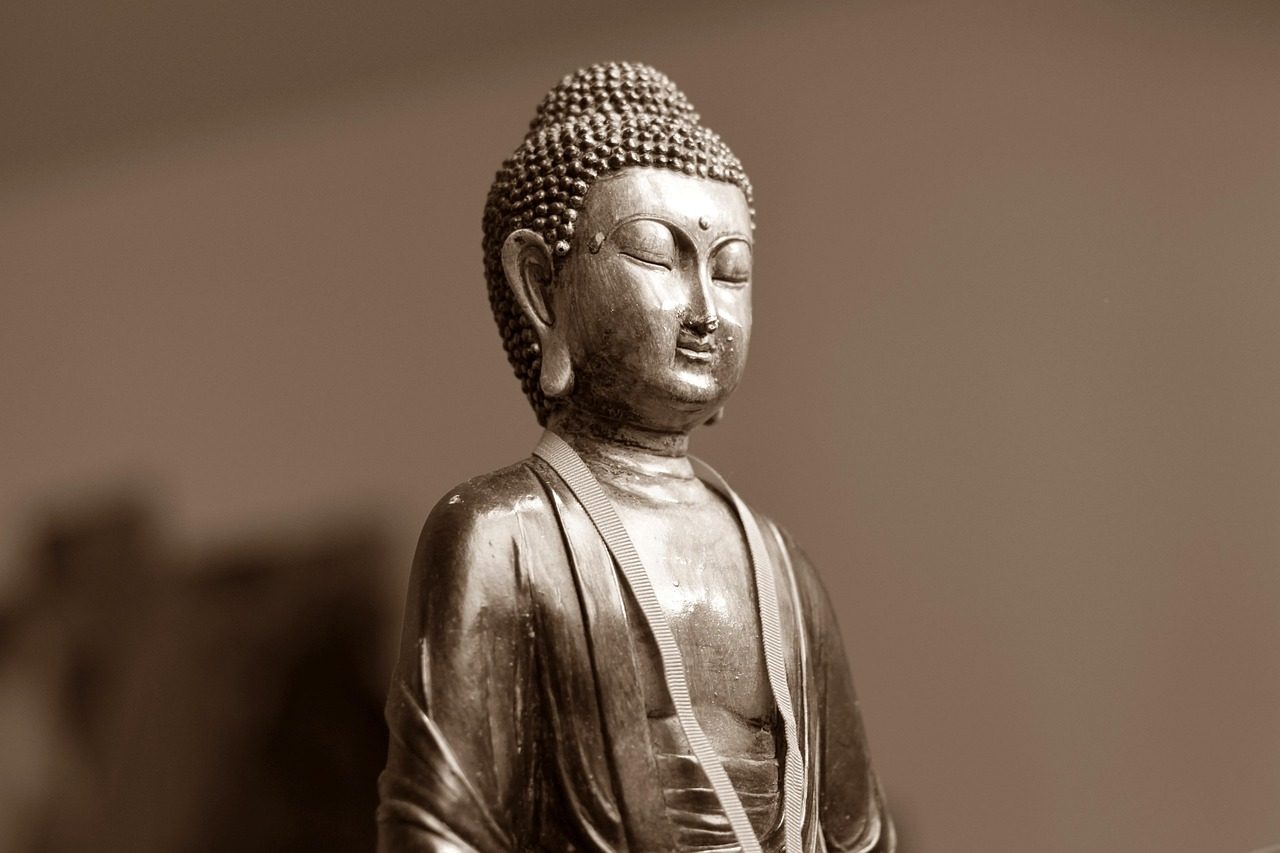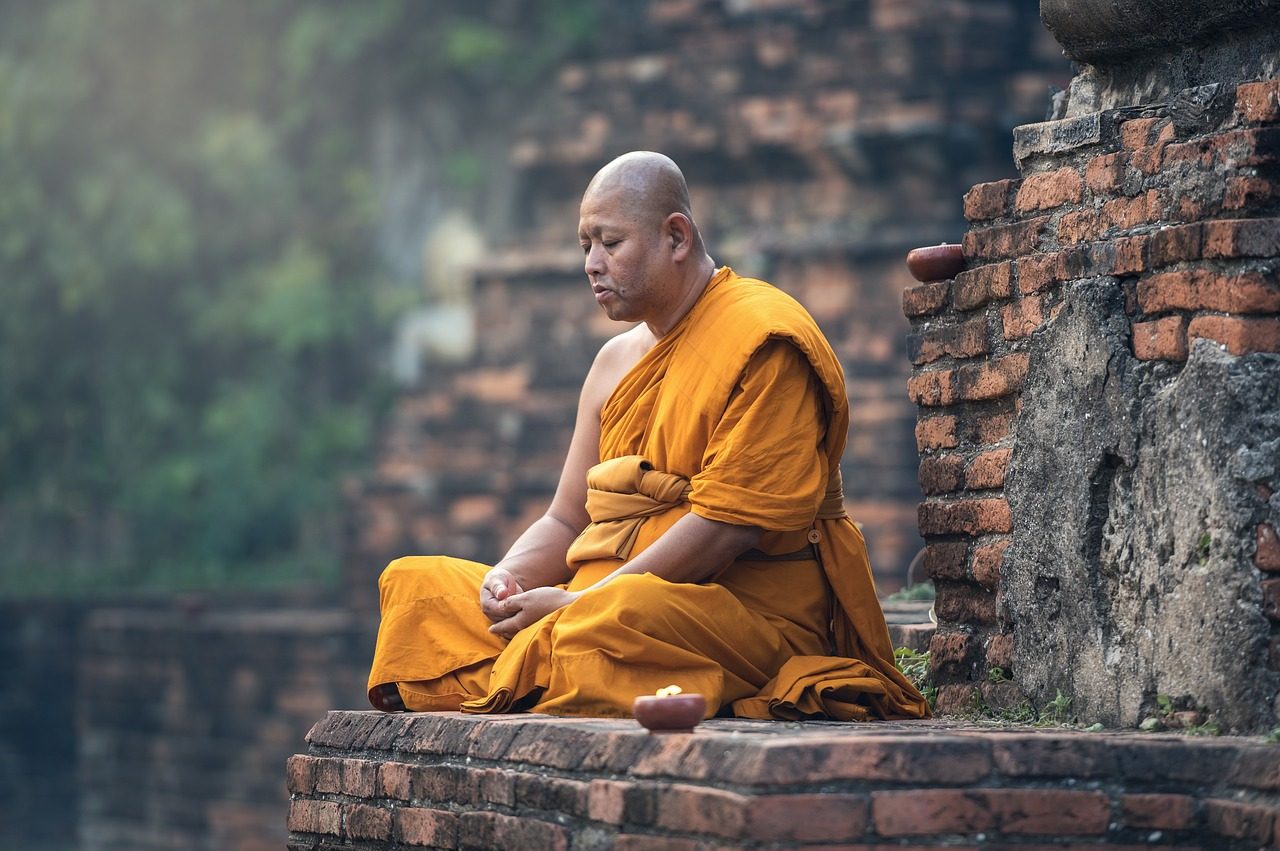The Difference Between Tantra and Neo Tantra
Tantra is an ancient spiritual system focusing on self-discovery and divine union, involving committed practices like rituals and meditation. It investigates deep into spiritual awakening. Neo-Tantra, born in the 1960s, skims the surface, often emphasizing personal growth and sexuality. It’s like comparing a profound novel to a quick self-help book. Misunderstandings abound, often reducing Tantra to just “sex”, missing its true essence. Curious about the real differences? There’s more to explore in this intriguing contrast.
Understanding the Origins of Tantra and NeoTantra
You’re probably wondering how traditional Tantra, with its ancient rituals and spiritual depth, transformed into the neo-tantra of today, which sometimes seems more like a self-help workshop than a spiritual practice. Traditional Tantra, with its rich history and holistic teachings, gets overshadowed by neo-tantra’s modern, sexualized focus, often leading to misunderstandings. Let’s explore how neo-tantra emerged in the 1960s, shaped by cultural shifts and figures like Osho, and why this distinction matters in truly appreciating Tantra’s profound potential.
What is Traditional Tantra?

Traditional Tantra, with its roots stretching back thousands of years, isn’t just about sexuality—despite what some modern interpretations might suggest. It’s an ancient spiritual system, offering paths to freedom through spiritual awakening and self-discovery. Unlike the more recent Neo-Tantra, traditional practices aren’t focused primarily on sexuality. Instead, they emphasize rigorous spiritual training, transformation of the energy body, and union with the Divine. You’ll find two main paths: the right hand path, which sticks to strict guidelines, and the left hand path, which encourages exploration. Authentic Tantra values lineage and teacher-student relationships, using meditation, rituals, mantras, and hatha yoga. In the tantra vs neotantra difference, traditional Tantra provides depth and historical authenticity, offering more than just a surface-level experience.
The Emergence of NeoTantra
While Neo-Tantra’s emergence in the 1960s might seem like a fresh take on ancient practices, it’s not all incense and enlightenment. This modern adaptation, with its focus on sexuality and personal growth, diverges markedly from the broader spiritual aims of traditional Tantra. Influenced by figures like Osho, Neo-Tantra often zeroes in on sexual energy, leaving you wondering if there’s more to explore. It lacks the deep teacher-student lineage of classical Tantra, offering a more self-directed journey. You might enjoy the freedom from conditioned sexual norms, but it’s easy to overlook Tantra’s holistic nature—meditation, yoga, and spiritual growth. Neo-Tantra sometimes simplifies these rich teachings, leaving you with just a glimpse of Tantra’s expansive potential.
Historical and Cultural Contexts
Neo-Tantra may feel like a rebellious teenager, enthusiastic to break away from traditional roots, but understanding its origins offers a richer perspective. You might get caught up in its modern allure, yet looking back at its roots helps clarify what’s authentic. Tantra isn’t just about mysticism; it’s an ancient system of spiritual growth from India.
Here’s what you need to grasp:
- Traditional Tantra is rooted in spiritual enlightenment through teacher-student lineages, not just self-proclaimed gurus.
- Neo-Tantra emerged in the 20th century, often emphasizing sexuality over spirituality, thanks to figures like Osho.
- Cultural appropriation concerns arise as Westerners adopt Tantra without grasping its cultural significance.
- Traditional practices like meditation and rituals aren’t always central to neo-tantra, which leans on modern therapeutic techniques.
Understanding these differences is liberating.
Tantra vs NeoTantra Difference: Core Philosophies
You might have noticed how authentic Tantra feels like initiating a profound spiritual journey, aiming for union with the Divine, while Neo-Tantra seems more like a self-help retreat focusing on personal growth through sexuality. Authentic Tantra treats sexuality as just one part of a spiritual quest, with teachings passed down through respected lineages, ensuring you’re not just winging it. On the flip side, Neo-Tantra often places sexuality at the forefront, with teachers sometimes self-appointed, which can leave you wondering about the real depth and intention behind it all.
Spiritual Goals and Intentions
When diving into the spiritual goals and intentions of Tantra versus Neo-Tantra, it’s easy to feel a bit overwhelmed. But let’s break it down:
- Authentic Tantra: This path isn’t just about you—it’s about transcending personal limits and uniting with the Divine. Think deep spiritual growth and enlightenment.
- Neo-Tantra: More self-focused, it’s about personal healing and self-improvement. It’s great for feeling better, but doesn’t quite reach the cosmic depths.
- Altruistic Intentions: Traditional Tantra is driven by Bodhichitta, aiming to alleviate suffering for all beings—not just a personal journey.
- Scope of Practice: Authentic Tantra sees the whole universe; Neo-Tantra often sticks to sexual and relational dynamics, missing the broader picture.
If you’re craving freedom, choose wisely!
Role of Sexuality in Each Path
While the word “Tantra” might conjure up images of steamy encounters, authentic Tantra isn’t just about sex—far from it! Instead, it views sexuality as a part of a broader spiritual journey, aiming for divine connection through meditation and rituals. In contrast, neo-tantra often places sexuality front and center, more like a self-improvement workshop focusing on emotional connection and freedom. It’s like comparing a spiritual retreat to a weekend getaway—each offers different experiences.
Aspect – Authentic Tantra – Neo-Tantra
Focus – Spiritual growth and divine union – Personal healing and intimacy
Sexuality’s Role – Integrated into holistic practices – Central theme
Approach – Sacred force for transformation – Similar to sex therapy
Outcome – Transcendence through life – Emotional and sexual freedom
Authentic Tantra offers depth, while neo-tantra provides personal growth, with its own unique limitations.
Lineage and Authenticity
Isn’t it frustrating when you’re searching for spiritual depth, only to find a maze of confusing teachings? The traditional path of Tantra offers clarity through established lineages, ensuring authentic teachings passed down from enlightened masters. Here’s how:
- Lineage Matters: Authentic Tantra insists on a teacher-student lineage, preserving depth and spiritual richness.
- Direct Transmission: Genuine Tantra relies on direct teachings, connecting you to a profound tradition.
- No Lineage, No Tantra: Without a lineage, practices can feel hollow, lacking true spiritual depth.
- Neotantra’s Pitfalls: Neotantra often skips this structure, leading to diluted practices and self-proclaimed teachers without rigorous training.
Choosing a path with genuine lineage offers freedom from confusion, anchoring you in time-tested wisdom.
Key Practices: Traditional vs Modern Approaches

When you’re trying to navigate the intricate world of Tantra, traditional practices like rituals, mantras, and meditation might seem challenging with their demand for deep commitment and patience. On the other hand, Neo-Tantra‘s modern techniques and workshops promise quick fixes with psychology and breathwork, but they often leave you wondering if you’re just scratching the surface. While traditional Tantra focuses on transforming your energy body, Neo-Tantra can sometimes feel like it’s more about a lively expression of sexual energy, which, let’s be honest, might not always lead to spiritual enlightenment.
Rituals, Mantras, and Meditation
Diving into the world of Tantra, you might feel overwhelmed by the myriad of rituals, mantras, and meditation practices, and honestly, who wouldn’t? These practices aren’t just spiritual fluff; they’re a path to deeper consciousness.
- Rituals: Traditional Tantra rituals can be elaborate, needing a teacher’s guidance to tap into spiritual energies. Imagine a sacred ceremony, but with purpose beyond aesthetics.
- Mantras: These sacred sounds guide you, aligning your energy and focusing your mind. They’re like the soundtrack to your spiritual journey.
- Meditation: In authentic Tantra, meditation is disciplined, offering a bridge to inner peace and divine connection. It’s more than just sitting still.
- Neo-Tantra: It’s casual, eclectic, and often skips the depth of traditional practices, focusing more on personal growth. Freedom, yes, but also less structure.
NeoTantra Techniques and Workshops
Neo-tantra workshops often promise a journey of self-discovery, but let’s be real—decoding the chaos can feel like trying to navigate a funhouse with no map. You might find yourself in a session that feels more like a casual retreat than a disciplined practice. Unlike traditional tantra, which demands years of meditation and rigorous rituals, neo-tantra focuses on personal healing with modern twists like breathwork and psychology. Sexual practices take center stage, emphasizing connection and healing. But here’s the kicker: anyone can claim to teach neo-tantra, lacking the lineage that grounds traditional tantra. Workshops might introduce you to tantra massage, rooted in therapeutic methods rather than spiritual tradition. It’s a mix of hope, self-discovery, and a splash of confusion.
Energy Work and Kundalini
Steering through the world of energy work and Kundalini can feel like trying to solve a puzzle with missing pieces. Traditional Tantra asks for dedication, channeling Kundalini through intense practices like meditation and breathwork. It’s no walk in the park, but the spiritual awakening is unmatched. In contrast, Neo-Tantra takes a more relaxed approach, often focusing on instant gratification, which can leave you feeling unfulfilled.
Here’s what to reflect on:
- Traditional Tantra: Focuses on deep, transformative experiences through rigorous practice.
- Neo-Tantra: Prioritizes personal, often fleeting experiences over historical depth.
- Energy Body Practices: Vajrayana Tantra involves both physical and energetic well-being.
- Kundalini Missteps: Neo-Tantra might overemphasize sexual energy, missing grounding practices.
Choose wisely; your journey depends on it.
Common Misconceptions About Tantra and NeoTantra
You might think Tantra is just about sex, thanks to media portrayals, but it’s a rich spiritual tradition that goes way beyond the bedroom. It’s frustrating how neotantra often hogs the spotlight, reducing everything to sexual techniques and personal growth, leaving out the deeper spiritual elements. This misunderstanding not only blurs the lines between Tantra and neotantra but also overshadows the true essence of sacred practices, making it easy to confuse the two.
Tantra Is Not Just About Sex
While many people think Tantra is just about sex, this couldn’t be further from the truth. Authentic Tantra is a vast spiritual system, not a simple guide to better sex. Imagine diving into an ocean, rich with diverse, spiritual teachings, rather than wading through a shallow puddle focused on quick pleasures. Here’s what Tantra truly offers:
- Yoga and Meditation: Engage in practices that center your mind and body, fostering inner peace and balance.
- Holistic Spirituality: Embrace a full spectrum of spiritual growth, not just the physical aspects.
- Deep Knowledge: Explore ancient wisdom that goes beyond personal pleasure, guiding you towards enlightenment.
- Spiritual Goals: Pursue true spiritual fulfillment, not just fleeting satisfaction.
Break free from misconceptions and discover the depth of authentic Tantra.
Media Representations vs Reality
Isn’t it frustrating how media often turns complex spiritual practices into flashy headlines? Tantra gets boiled down to mere sexuality, overshadowing its profound spiritual teachings that include meditation and yoga. It’s like assuming a book’s worth is in its cover. Neo-tantra, marketed as accessible, focuses on sexual liberation and personal growth, missing the deeper spiritual goals of traditional Tantra. Many believe all Tantra is sexual, yet authentic Tantra sees sexuality as just one part of a vast spiritual journey. Media’s sensationalism leads to a superficial understanding, confusing traditional practices with neo-tantric ones. This misrepresentation ignores the principles of lineage and rigorous training, making it hard for seekers of true freedom to grasp the complete picture.
Benefits and Criticisms of Each Approach

You might appreciate the rich spiritual depth and rigorous discipline of traditional Tantra, which offers a profound journey toward enlightenment. On the flip side, Neo-Tantra‘s focus on sexual expression and personal growth makes it more accessible and appealing, especially if you’re looking for immediate, tangible benefits. However, it’s a bit ironic how Neo-Tantra often gets criticized for oversimplifying or misrepresenting authentic teachings, leading to confusion and sometimes a frustrating lack of spiritual depth.
Strengths of Traditional Tantra
Embracing traditional Tantra can feel like diving into a rich, spiritual tapestry, offering more than just a surface-level experience. You might be frustrated by shallow self-help trends, but traditional Tantra offers something deeper. It’s not just about sexuality; it’s a holistic spiritual journey. Here’s why it’s worth exploring:
- Holistic Journey: Traditional Tantra guides you through meditation, rituals, and energy cultivation, aiming for a profound union with the Divine.
- Authenticity: Passed down through generations, its teachings maintain depth and authenticity, unlike the casual approach of Neo-Tantra.
- Broader Understanding: It views sexuality as part of spiritual growth, not the main event, avoiding the confusion of prioritizing sex.
- Altruistic Motivation: Driven by Bodhichitta, it aspires to free all beings from suffering, adding a noble dimension to your practice.
Appeal and Accessibility of NeoTantra
While traditional Tantra offers a deep spiritual path, Neo-Tantra attracts those looking for more immediate personal growth and stronger emotional connections. You might find its emphasis on intimacy and modern psychological techniques appealing, especially if you’re tired of feeling disconnected in relationships. Neo-Tantra often creates a space where you can challenge societal conditioning around sexuality, leading to healthier connections.
Its accessibility is a refreshing change, offering practical tools and workshops that welcome everyone. However, some argue it oversimplifies traditional Tantra, focusing too much on sexuality, which might leave you scratching your head over what’s missing in spiritual depth. But if you’re after quick, tangible benefits, Neo-Tantra might just be your ticket to newfound freedom and emotional richness.
Criticisms and Controversies
Although neo-tantra offers a seemingly modern twist on ancient practices, it often stirs up a whirlwind of criticisms and controversies. You might find it fascinating, but it’s essential to be aware of the debates surrounding it:
- Misrepresentation: Neo-tantra tends to focus on sexuality, which can confuse you about tantra’s true spiritual roots.
- Cultural Appropriation: Practicing neo-tantra without respecting its cultural origins might make you complicit in cultural appropriation.
- Lack of Depth: You might experience intimacy and connection, but neo-tantra lacks the spiritual depth of authentic tantra.
- Unqualified Teachers: Unlike traditional tantra, where rigorous training is key, anyone can claim expertise in neo-tantra.
Navigating these criticisms helps you make informed choices, ensuring your journey is both freeing and respectful.
How to Choose a Path Aligned With Your Intentions
Choosing between Tantra and neo-tantra can feel like traversing a labyrinth, but start by questioning your true intentions—are you seeking deep spiritual growth or more personal development? Finding authentic teachers and resources is essential; look for those who respect traditional lineages and don’t just promise instant enlightenment with a weekend workshop. Remember, while exploring these paths, it’s okay to feel overwhelmed, but don’t let flashy claims distract you from what’s genuinely meaningful to you.
Questions to Ask Before Committing
How do you decide which path to follow when both seem enticing yet conflicting? It’s essential to ask yourself some key questions to align your journey with your true intentions. Here’s a guide to help:
- Are the teachings rooted in an authentic lineage? Real Tantra needs a spiritual tradition and solid teacher-student bonds.
- What are your intentions? Do you seek divine union or personal healing? Authentic Tantra leans towards transcendence, while neotantra often offers self-improvement.
- How deep are the practices? Classical Tantra demands rigorous techniques, while neotantra might be more laid-back.
- How is sexuality addressed? Is it just one element of a spiritual path, or is it the main focus?
Navigating these questions can illuminate your path.
Finding Authentic Teachers and Resources
You’ve pondered the questions, and now you’re ready to take a step forward, but where do you even begin finding authentic teachers and resources for Tantra? Start by seeking teachers with verified lineage and deep traditional training. This guarantees you’re tapping into well-established spiritual traditions, not just quick-fix solutions. Look for those who offer a holistic approach—think meditation and yoga over just sexuality. Trustworthy recommendations from the spiritual community are gold; they’ll help sift through the noise. Consider introductory workshops to see if the teachings align with your goals. Be wary of the neo-tantra hype, often focused on personal gratification rather than true spiritual depth. Remember, finding the right path isn’t easy, but it’s worth the effort.
Conclusion: Finding Awareness and Integrity on the Tantric Path
When you’re traversing the Tantric path, it’s like walking a tightrope between authentic spiritual growth and the alluring simplicity of Neo-Tantra. This journey demands awareness and integrity, making sure you don’t lose sight of deeper meanings. Here’s how you can stay grounded:
- Embrace Tradition: Seek practices rooted in established lineages. Authentic Tantra offers meditation, rituals, and energy work for profound growth.
- Intentions Matter: Let altruism guide you. Authentic Tantra aims to alleviate suffering, not just offer personal healing or sexual exploration.
- Seek Depth: Avoid Neo-Tantra’s superficiality. Pursue teachings that go beyond mere sensuality.
- Stay Disciplined: Commit to rigorous training that preserves traditional teachings, ensuring a genuine understanding of your practice.
Your path should reflect a desire for true freedom and enlightenment.
Conclusion
Choosing between Tantra and Neo-Tantra might feel like you’re deciding between ancient wisdom and modern flair, and honestly, it can be overwhelming. You’re not alone if you’re torn or frustrated; many are. But remember, the path you choose should resonate with your intentions. Whether you’re drawn to the deep roots of tradition or the evolving dance of modernity, trust your instincts. It’s about finding authenticity and balance, not perfection. Embrace your journey, with all its glorious messiness.
